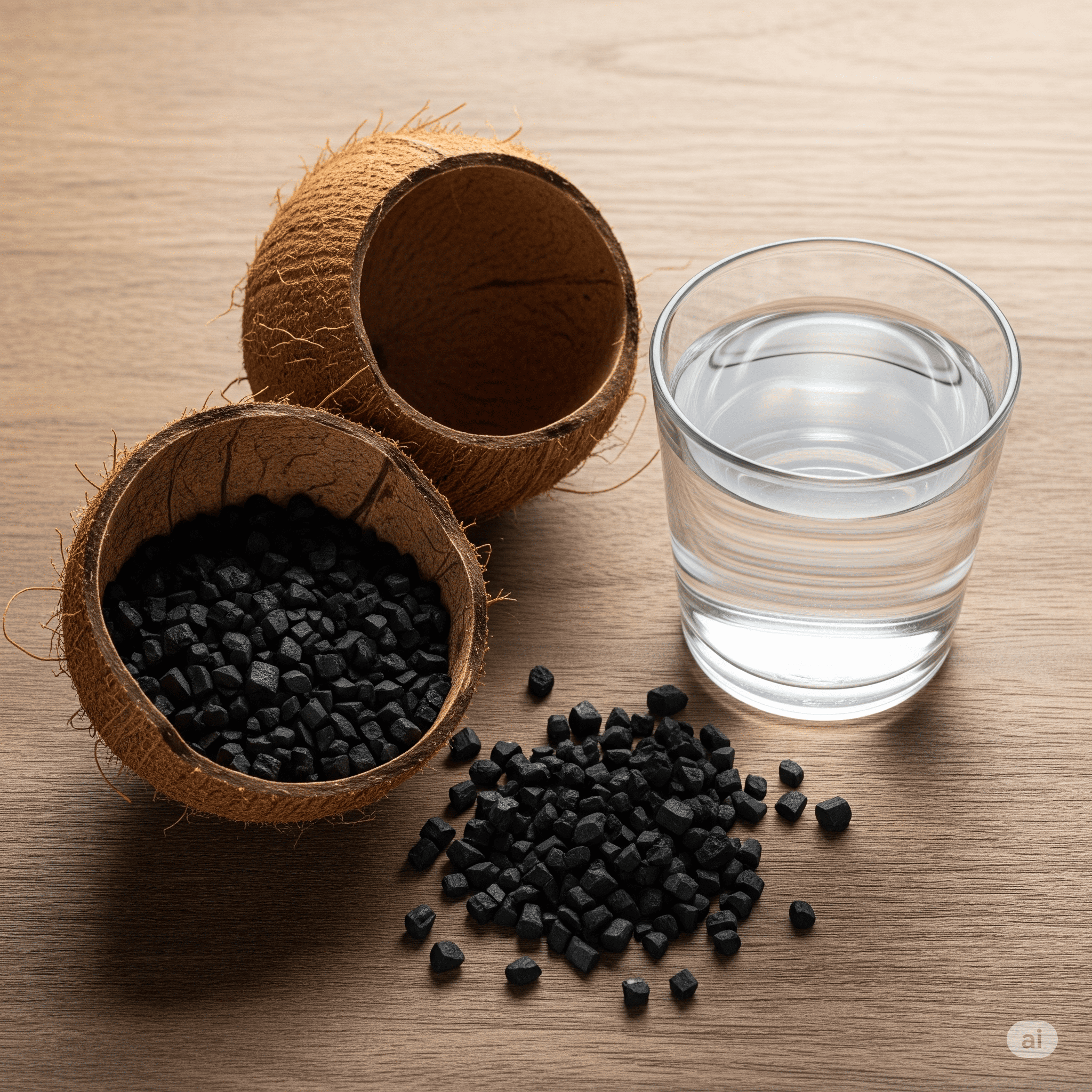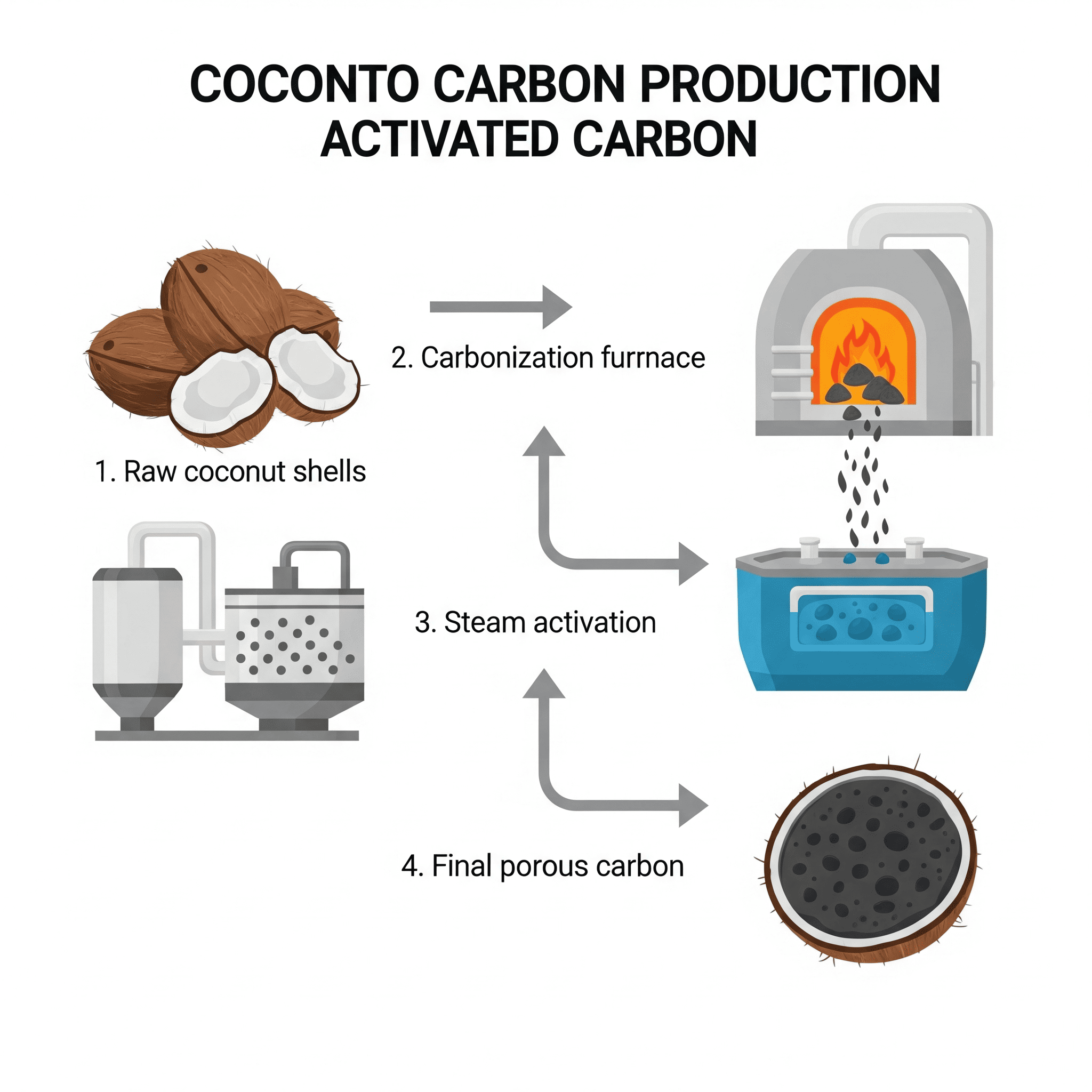Coconut shell activated carbon is used in many industries because it works well, comes from natural sources, and is better for the environment. It is made from coconut shells, which are leftovers from the coconut industry. This carbon helps with filtering water, cleaning air, getting gold, and even in cosmetics. As people care more about eco-friendly materials, this kind of carbon is becoming a better choice than coal or wood-based carbon.
This guide explains what coconut shell activated carbon is, how it is made, why it is useful, how it compares to other types, and where it is used.

Heating coconut shells makes coconut shell activated carbon in an oxygen-free environment. Then, it goes through another step where pores are opened, either with steam or chemicals. This process makes the carbon full of tiny holes.
These tiny holes give the carbon a large surface area, which helps trap small particles and gases. That is why it works well for cleaning water, air, and other things.
Step 1 – Carbonization:
The shells are heated between 400°C and 700°C without oxygen.
Step 2 – Activation:
After this, the carbon has numerous small pores, a firm structure, and low ash content.
These numbers indicate the strength, cleanliness, and value of the carbon.

1. Eco-Friendly and Renewable
It comes from leftover coconut shells, which makes it better for the planet than coal or wood carbon.
2. High Adsorption
It can trap small molecules like chlorine, VOCs, and toxins — making it ideal for water and air filters.
3. Strong and Low Dust
It is more complex than other carbon types. This means less dust, longer life, and easier reuse.
4. Improves Water Taste and Smell
It removes bad smells, colors, and tastes from drinking water.
5. Compact but Effective
It works well in small spaces because of its high density and low ash.
1. Water Filters
Used in homes and city systems to clean chlorine, pesticides, and other chemicals.
2. Air Filters
Used in buildings, cars, and machines to clean formaldehyde, benzene, and bad smells.
3. Gold Mining
Used to catch gold in chemical processes. Its strength helps it last longer.
4. Food and Drink
Used to clean and remove color/smell from sugar, oil, and drinks like wine.
5. Skincare and Cosmetics
Used in masks and soaps to clean skin and remove oil or dirt.
6. Medicine
Used to clean chemicals during drug making or as part of drug delivery.
FeatureCoconut ShellCoal-BasedWood-Based
Pores Mostly Micropores Micro + Mesopores Macropores
Source Renewable Non-renewable Semi-renewable
Strength High Medium Low
Ash Low High Medium
Best Use: Water, air, gold, Gas, water, Color removal
Environmental Impact Low High Medium
Check the following:
Always ask for a test report from the supplier.
Q: Why is coconut shell carbon better?
A: It has a high surface area, firm structure, low ash, and is renewable.
Q: Can it be reused?
A: Yes. You can clean and reuse it, especially in industry and gold mining.
Q: Is it safe for water or cosmetics?
A: Yes, if certified. Always check the label.
Q: How is quality tested?
A: Key tests include iodine number, ash level, surface area, and hardness.
Q: Where is it made?
A: Mainly in India, Sri Lanka, Indonesia, the Philippines, and Vietnam.

Ningxia Yongruida Carbon Co,.Ltd was founded in
2003.With an area of over 50000 square meters ,our
factory is located in the city of Shizuishan Ningxia .